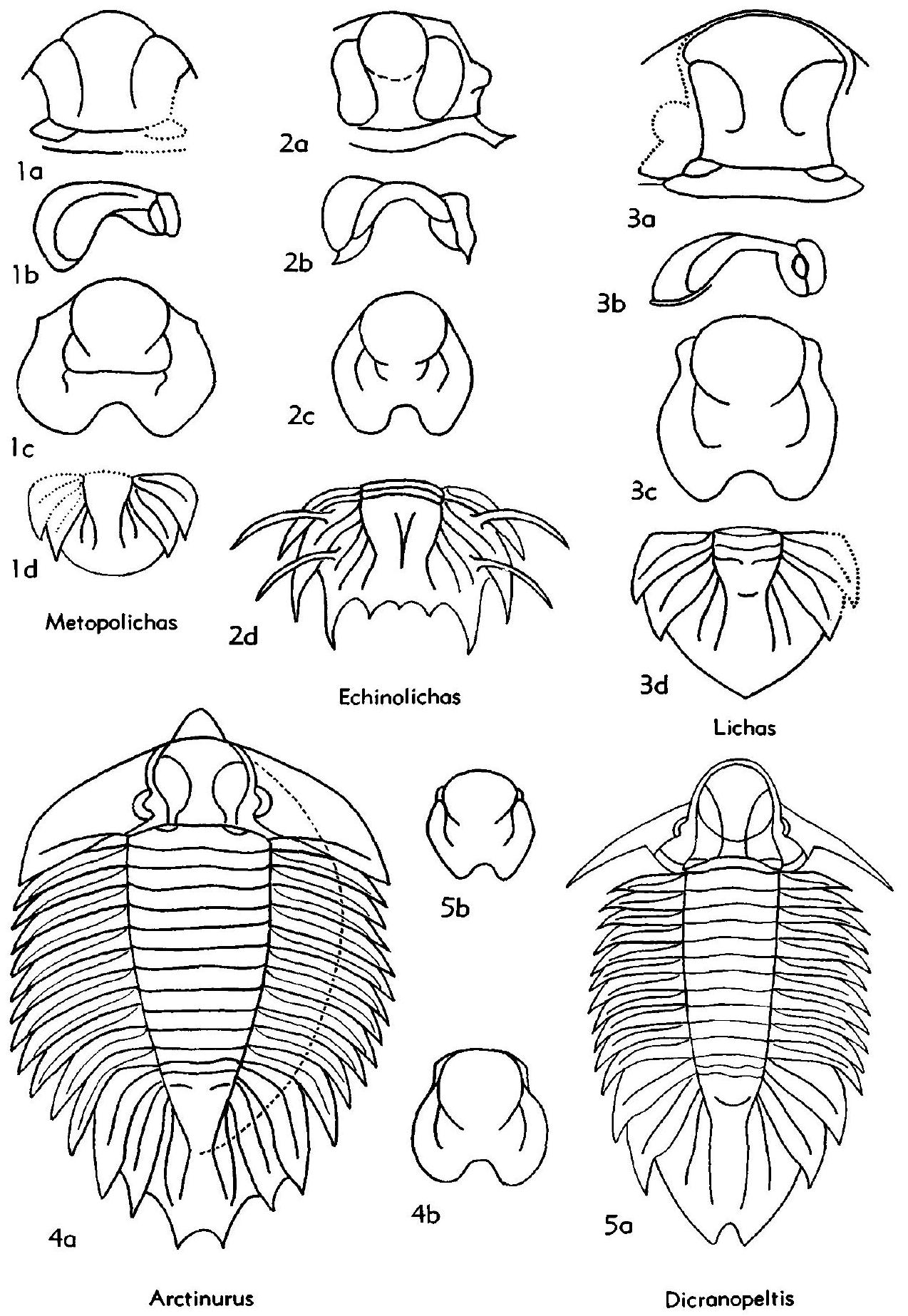Welcome to the Treatise on Invertebrate Paleontology!
Please enter a genera name to retrieve more information.

Dicranopeltis
Classification
Phylum:
Arthropoda
Subphylum:
Trilobitomorpha
Class:
Trilobita
Order:
Lichida
Family:
Lichidae
Subfamily:
Lichinae
Formal Genus Name and Reference:
Dicranopeltis Hawle & Corda, 1847
Type Species:
Lichas scabra Beyrich, 1845, SD REED, 1902
Images
(Click to enlarge in a new window)
392, 5a, exoskel., × 0.85, 392, 5b, 393, 5, hypostoma, × 0.9, × 2.7 (486n)
Synonyms
Trachylichas, Dicranopeltoides, Makromuktis, ?Raymondarges
Geographic Distribution
Eu.-N.Am.
Age Range
Beginning Stage in Treatise Usage:
U.Ord.
Beginning International Stage:
Sandbian
Fraction Up In Beginning Stage:
0
Beginning Date:
458.18
Ending Stage in Treatise Usage:
U.Sil.
Ending International Stage:
Pridoli
Fraction Up In Ending Stage:
100
Ending Date:
419
Description
Bicomposite lateral lobes usually circumscribed, longitudinal furrows may be connected to occipital furrow by depressions, occipital lobes commonly ill defined. Axis of pygidium long, narrowing toward back, 3 pairs of furrowed pleurae ending in free points.
References
Museum or Author Information
Classification
Phylum:
Arthropoda
Subphylum:
Trilobitomorpha
Class:
Trilobita
Order:
Lichida
Family:
Lichidae
Subfamily:
Lichinae
Formal Genus Name and Reference:
Dicranopeltis Hawle & Corda, 1847
Type Species:
Lichas scabra Beyrich, 1845, SD REED, 1902
Images
(Click to enlarge in a new window)
392, 5a, exoskel., × 0.85, 392, 5b, 393, 5, hypostoma, × 0.9, × 2.7 (486n)
Synonyms
Trachylichas, Dicranopeltoides, Makromuktis, ?Raymondarges
Geographic Distribution
Eu.-N.Am.
Age Range
Beginning Stage in Treatise Usage:
U.Ord.
Beginning International Stage:
Sandbian
Fraction Up In Beginning Stage:
0
Beginning Date:
458.18
Ending Stage in Treatise Usage:
U.Sil.
Ending International Stage:
Pridoli
Fraction Up In Ending Stage:
100
Ending Date:
419
Description
Bicomposite lateral lobes usually circumscribed, longitudinal furrows may be connected to occipital furrow by depressions, occipital lobes commonly ill defined. Axis of pygidium long, narrowing toward back, 3 pairs of furrowed pleurae ending in free points.
